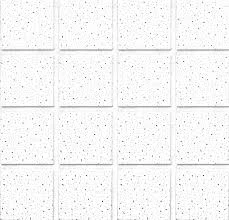- Afrikaans
- Albanian
- Amharic
- Arabic
- Armenian
- Azerbaijani
- Basque
- Belarusian
- Bengali
- Bosnian
- Bulgarian
- Catalan
- Cebuano
- Corsican
- Croatian
- Czech
- Danish
- Dutch
- English
- Esperanto
- Estonian
- French
- German
- Greek
- Hindi
- Indonesian
- irish
- Italian
- Japanese
- Korean
- Lao
- Malay
- Myanmar
- Norwegian
- Norwegian
- Polish
- Portuguese
- Romanian
- Russian
- Serbian
- Spanish
- Swedish
- Thai
- Turkish
- Ukrainian
- Uzbek
- Vietnamese
Août . 29, 2024 01:53 Back to list
Grid Ceiling Board Solutions | Innovative Ceiling Design
Exploring Grid Ceiling Boards An Essential Component of Modern Interior Design
In the realm of modern interior design, grid ceiling boards have emerged as a pivotal element that blends functionality with aesthetics. As an architectural feature, these ceilings are not merely structural components; they serve multiple purposes, from enhancing acoustics to improving lighting and energy efficiency. This article delves into the significance of grid ceiling boards, their various types, installation methods, and advantages in contemporary spaces.
Grid ceiling boards, often referred to as suspended ceilings or drop ceilings, are a system of ceiling tiles that are mounted on a grid framework. This grid is typically made of lightweight materials such as metal, allowing for easy installation and maintenance. The primary advantage of grid ceilings lies in their versatility. They can be adapted to virtually any space, whether it be an office, retail environment, or a residential setting. By utilizing grid ceiling boards, designers can create a seamless and uniform appearance that elevates the overall interior design of a space.
One of the standout features of grid ceiling boards is their ability to enhance sound control. In acoustic applications, grid ceilings are designed with sound-absorbing properties that can significantly reduce noise levels in busy environments. This is particularly beneficial in places like schools, hospitals, and office buildings, where excessive noise can hinder productivity and comfort. The tiles used can vary in their absorption capabilities, allowing designers to select options that meet the specific acoustic needs of each area.
grid ceiling board

Furthermore, grid ceiling boards provide an efficient solution for concealing electrical and plumbing systems. The space between the ceiling tiles and the original ceiling structure can be utilized to hide unsightly wires, ducts, and pipes. This not only keeps the area looking clean and organized but also facilitates easier access for maintenance and repairs. In commercial spaces where aesthetics are crucial, this hidden functionality is invaluable.
Installation of grid ceiling boards is generally straightforward, which is a significant advantage for contractors. The grid framework is first secured to the original ceiling, and then the tiles are fitted into the grid. This process can often be completed quickly, minimizing disruption to the existing environment. Additionally, in the event of damage to a tile, individual tiles can be easily replaced without the need to dismantle the entire ceiling.
Finally, grid ceiling boards offer the opportunity for creative customization. With a wide array of designs, colors, and materials available, interior designers can utilize these ceilings to make bold statements or create soothing, minimalist atmospheres. Whether opting for classic white tiles or more vibrant colors and patterns, grid ceiling boards can dramatically influence the mood and functionality of a space.
In conclusion, grid ceiling boards represent a blend of practicality and style in modern architectural design. Their numerous benefits, such as acoustic control, aesthetic versatility, and ease of installation, make them an ideal choice for a variety of applications. As designers continue to explore innovative ways to enhance interiors, grid ceiling boards will undoubtedly remain a vital component in creating functional and appealing environments.
-
Transform Interiors with PVC Gypsum Ceiling: A Stylish, Durable, and Moisture-Resistant SolutionNewsMay.19,2025
-
The Smart Interior Upgrade: Discover the Durability and Versatility of Gypsum Ceiling Access Panel SolutionsNewsMay.19,2025
-
The Smart Choice for Interior Design: Discover the Value of PVC Gypsum Ceiling SolutionsNewsMay.19,2025
-
Mineral Fiber Ceiling Tiles: The Smart Blend of Performance and AestheticsNewsMay.19,2025
-
Mineral Fiber Ceiling Tiles: The Superior Choice Over Gypsum for Sound and Fire SafetyNewsMay.19,2025
-
Mineral Fiber Ceiling Tiles: Eco-Friendly Strength and Style for Every CeilingNewsMay.19,2025







